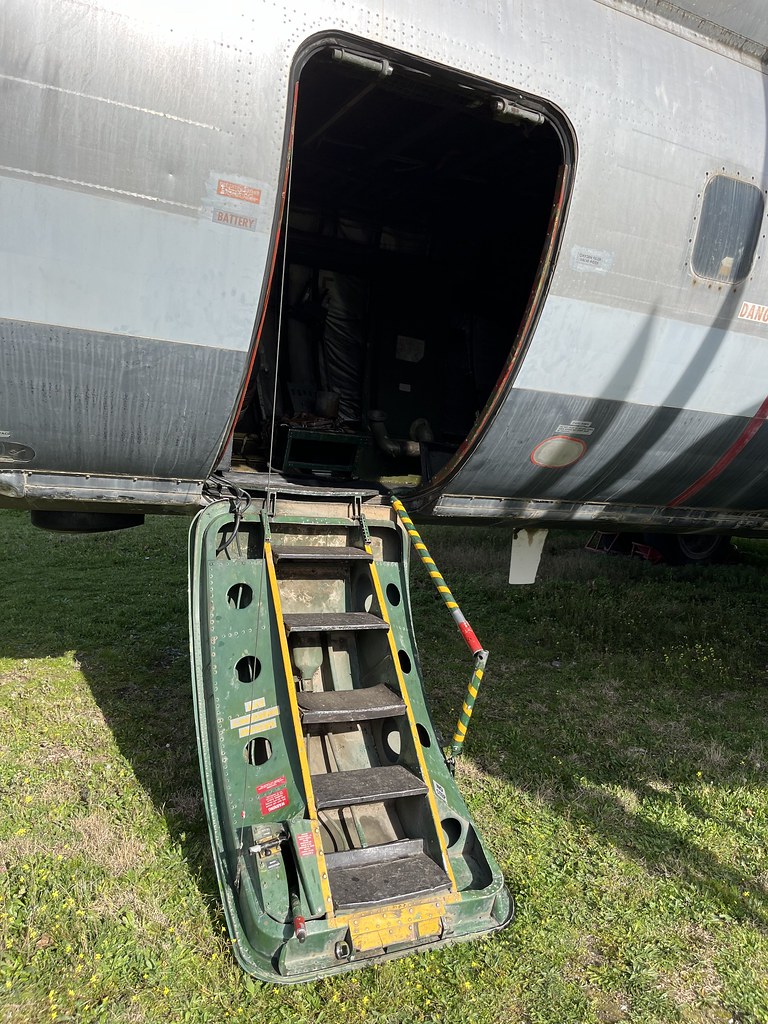The interior of the large Spanish KC-97L Stratotanker preserved in the Museo del Aire
Last week we saw here the history of the Spanish KC-97L Stratotankers, the first tanker aircraft that the Air Force had.
In that entry we saw an interesting video from the YouTube channel Fly By Wire Aviation showing the exterior of this great plane, one of the largest of all those preserved in the Museo del Aire (Air Museum) of Cuatro Vientos, in Madrid. That same channel published last night another even more interesting video, showing the interior of this plane:
As we saw last week, the KC-97L preserved in the museum is the TK.1-3 (cn 16971, 123-03), which was operated in Spain by the 123 Squadron of the 12th Wing to refuel the F-4C Phantom II fighters with fuel in flight. This aircraft was previously operated by the United States Air Force (USAF), with the number 53-0189. Fly By Wire Aviation has been kind enough to give me some photos of this visitfor publication in Defense and Aviation. In the first of them we see that on the fuselage of the TK.1-3 we can still distinguish the inscription "U.S. Air Force", characteristic of USAF aircraft in those years. You can also see its USAF number, 0189, to the left of the door.

Unlike the civil variant of this plane, the Boeing 377, in the KC-97 the interior of the plane was accessed through two doors located in the lower part of the fuselage, on the port side. One of the doors was located in front, giving access to the cabin, and the other behind, facilitating access for the refueling boom operator. Here we see the front door, which led to a vertical ladder with which one climbed to the main compartment of the fuselage. You can see this vertical staircase in the video. A trapdoor closed access to that staircase when the plane was in flight.

Here we see the cockpit of the plane. It was glassed in a very similar way to the plane on which the design of the C-97, the famous B-29 bomber, was based. In the cabin the pilot (on the port side) and the captain (on the starboard side) were seated in the two front seats. Behind them sat the flight engineer, at a small table facing starboard, with a large instrument panel before him. The engineer's seat was less comfortable than that of the pilot and co-pilot, as you can see in the video.

Here we see some of the instruments that the pilot and co-pilot used. In the central panel we see the four levers to control the four Pratt & Whitney R-4360B Wasp Major radial piston engines (the levers are finished in yellow, although on other planes they were red). To its left, also finished in yellow, we see the engine synchronizer. On the right, finished in white, we see the two control levers of the General Electric J47-GE-23 jet engines, which were installed on the KC-97L to provide them with greater speed when launching. refuel fighters such as the F-4 Phantom II in flight.

In this photo we see the pilot's position. The image allows us to verify the good visibility that this highly glassed cockpit offered. On the left, below, we see the steering wheel that was used to turn the front axle.

As you can see in the video, the main compartment of the fuselage of this KC-97L is very clear. USAF planes used to take advantage of this space to carry fuel tanks. In the video we also see the position of the refueling boom operator. he was lying face down, facing the stern of the plane and with a chin support. On the USAF National Museum website they have photos of the interior of a KC-97L better preserved than the Spanish one and which belonged to the Ohio Air National Guard.
|
Don't miss the news and content that interest you. Receive the free daily newsletter in your email: |
- Most read
- The 'hole' without civil flights around Paris during the opening of the Olympic Games
- The firearms used by the Pontifical Swiss Guard, the smallest army in the world
- Stunning footage of the F-15QA Ababil in flight recorded from its cockpit
- The new CADPAT (MT) digital camouflage of the Canadian Armed Forces
- This is the driver station of an M1 Abrams tank and the impressive start of its engine
- The first photo of an F-16 fighter with Ukrainian insignia and the details it has revealed
- A Spanish Harrier II wins a RAFCTE trophy in England and flies with a small giraffe

 ES
ES







Opina sobre esta entrada: